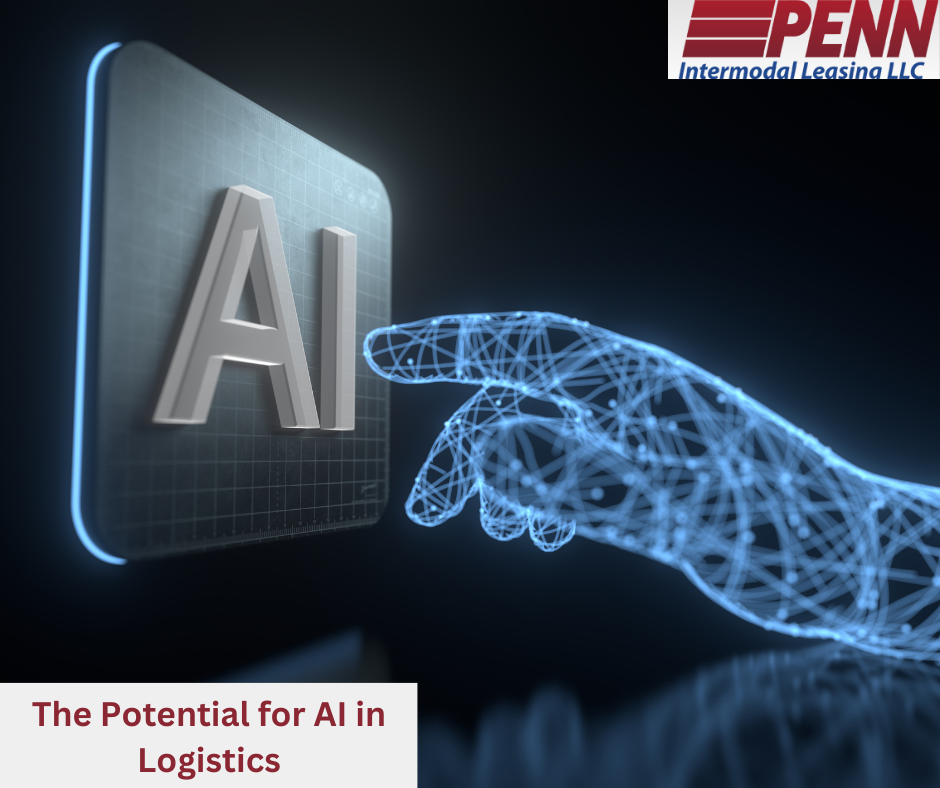How are Transportation, Distribution, and Logistics Companies incorporating AI into their Fleet Operations?
The logistics industry is continuously evolving to become faster, and more efficient. This continuous improvement and evolution is facilitated by advances in technology which are bringing about rapid changes in the industry.
The technology of the moment is artificial intelligence (AI) which enables the optimization of digital processing and is improving the speed of data analysis in not just the logistics industry, but in nearly all industries. In a recent study from PwC, AI is predicted to contribute nearly 15.7 trillion dollars into the global economy by 2030. By efficiently processing immense amounts of data, AI can make predictions which facilitate intelligent and informed decision-making. AI advancements are coming and companies are strategizing on when, where and how best to incorporate these tools into their operations.
While there is great potential for incorporating AI into the logistics industry, the technology is not yet proven and may produce flawed results, or even be harmful in certain circumstances. Caution and oversight are warranted.
3PL, 4PL, and 5PL’s Should Take Notice of the Opportunity for AI in Logistics
The integration of AI into the logistics industry is already being applied in order to meet demands for just-in-time product delivery, navigate supply chain disruptions, and keep up with the customer’s demand for ever faster, yet accurate on-site deliveries.
- Semi- and Autonomous Vehicles include a range of transportation equipment such as cars, trucks, robots, and drones to facilitate in-plant and “local” transportation routes. NOTE: These “local” routes are getting longer all the time. Some vehicles can run pre-programmed routes to operate independently via the use of software, while drones and similar equipment are deployed with human-operated remote control systems. Facilities and infrastructure are being constructed to support the use of autonomous vehicles in the logistics industry. Autonomous vehicles create efficiency in delivery times by optimizing routes, and have the ability to run 24-7. Built-in sensors and GPS links can assimilate traffic, weather, and real-time roadway conditions, incorporating this and related data to determine the fastest route to a destination.
- Big Data and its analysis is critical to the logistics industry. To effectively handle large quantities of data and convert it to useful information, AI uses predictive analysis to deliver fast and accurate suggestions. However, facilities require experienced programmers, data analysts, and operations personnel to develop useful data tools and to evaluate the recommendations generated by AI. Real world experience and accurate data enable informed decisions. Human and technology work together improving profitability by enabling the consolidation of transportation routes and schedules, minimizing paper transactions, and much more in order to achieve an efficient and streamlined network for the supply chain.
- Automated Warehouses AI is transforming traditional warehouses into cutting edge fulfillment centers. According to Insider Intelligence, by 2024 AI and robots will be used in nearly half of all medium and large fulfillment centers and warehouses in the US. By the end of 2024 this percentage may be much higher if a slowing economy reduces the need for warehouse space and inefficient facilities consolidate or exit the market.
- Inventory Management has significantly improved with the application of AI and IoT (Internet of Things). IoT devices provide data for AI to analyze. The combination of AI and IoT enables near real-time processing and analysis of data. Thus, companies which manage inventory and transport goods have a high degree of visibility as to the location of products and parts in the supply chain. How quickly these items are consumed and when they need to be re-ordered are also monitored and automated. In stable economic times these will generate accurate forecasts and may alert companies to changes in the marketplace. When enabled, these systems also provide consumer transparency.
- Workforce Management & Driver Training have seen improvements in efficiency with the incorporation of AI technology. Currently AI is being used in areas such as recruiting algorithms, training (including driver simulations), and for evaluating employee productivity. AI has the ability to analyze workforce data such as skill sets, training needs, and scheduling. In addition, AI reduces the time and resources required for workforce planning and management.
How are Companies Using AI in Logistics to Reduce Operating Costs?
The integration of AI technologies in logistics reduces operating costs and provides a long-term advantage, though the initial capital outlay can be high and advanced planning is required. Companies that have incorporated AI capabilities into their logistics operations have seen improved efficiency in their fleet performance in areas such as streamlined delivery routes, optimized freight matching, and lower fuel expenditures. AI can also lower maintenance costs by tracking required maintenance and alerting drivers when vehicle performance changes. This also improves safety with fewer on the road breakdowns. Fewer accidents may also lower Insurance costs. AI implementations can also reduce the need for paperwork, accelerate data analysis, and make predictions on inventory and the marketplace.
What are the Challenges to Integrating AI in Logistics and Transportation?
Integrating AI into existing operations can be done gradually, but to see dramatic benefits requires an upfront investment of time and capital. To justify the cost goals should be set and integrations must be thought through and planned in order to achieve the expected benefits. Another challenge associated with the integration of AI in logistics is data security. Companies must obtain and utilize methods to maintain compliance with safe data acquisition, storage and preservation, particularly when it comes to data on employees and customers. National and international data privacy laws should be followed and are dependent on the type of data being collected and the location.
What is the Future of AI in Logistics and Transportation?
The opportunities in the logistics and transportation industry to incorporate AI are continuously evolving. The use of AI in logistics is expected to grow as tools become more widespread and the technology becomes more accepted in the public domain. In this highly competitive industry, an investment in AI increases operating margins, improves efficiency and will become necessary, if it isn’t already, for those employed in the transportation and supply chain industries.
Embracing the digital revolution can be challenging. If you’re looking to free up capital for an AI investment, consider chassis leasing and consult with our team at Penn Intermodal Leasing, LLC. Contact us at 888-909-PENN. We offer over 30 years of experience in chassis leasing and will keep you current on chassis leasing and logistics industry trends.
Sources:
- Deepika. “Applications and Risks of AI in Supply Chain Management.” Supply Chain, Warehouse & Fulfillment, 29 June 2023, Accessed 25 September 2023.
- Lebow, Sara. “Half of US warehouse operators will use robots in 2024.” Insider Intelligence, 31 October 2022, Accessed 15 September 2023.
- “The Impact of Autonomous Vehicles on Logistics.” Zhenhub, Accessed 25 September 2023.
- “PwC’s Global Artificial Intelligence Study.” PwC, Accessed 15 September 2023.


